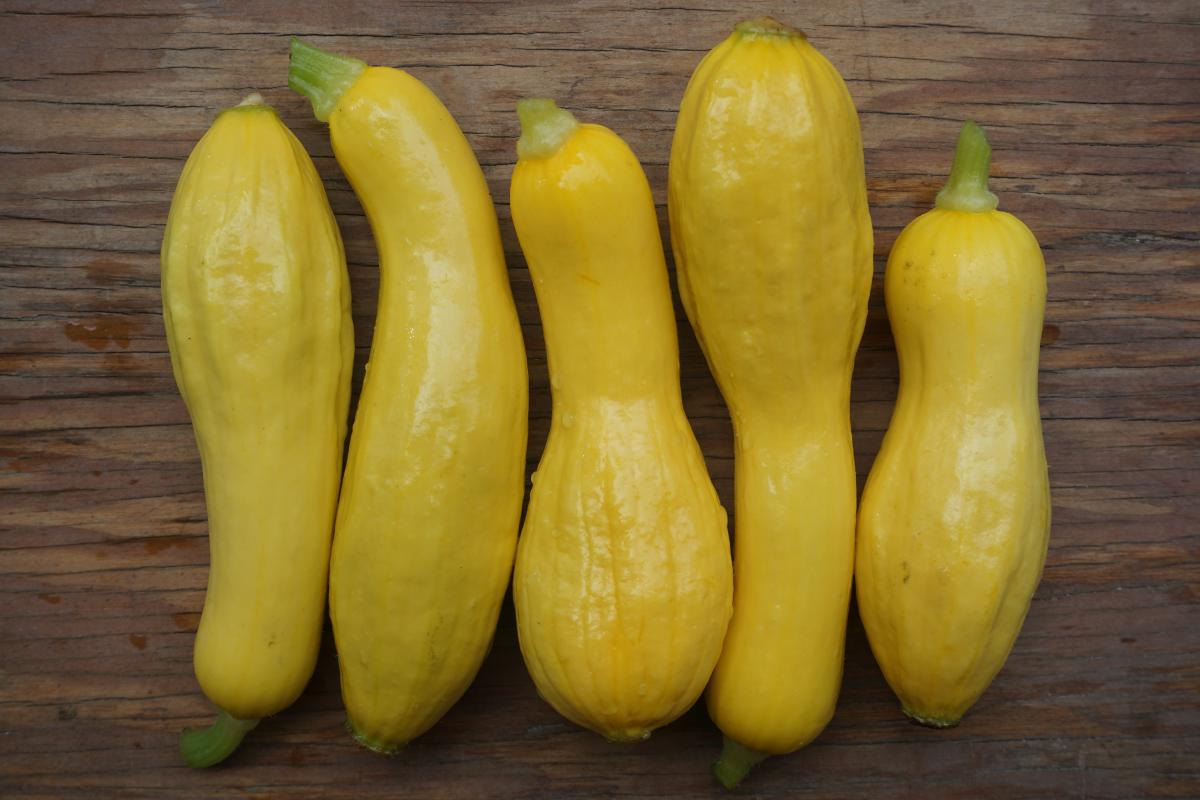


Blanching stops enzyme actions that can cause loss of flavor, color and texture. Summer squash, like most vegetables, must be blanched before they can be frozen. You can store summer squash at 45-55 degrees F (or in your refrigerator crisper drawer) for 2-4 days. Handle carefully as summer squash bruise easily. Wash squash in cold water to remove all visible signs of soil. So, if you grow them yourself, don’t be afraid to pick them when they’re still small. The smaller the squash, the less likely they will be bitter or woody. Selection and Preparation of Summer SquashĬhoose freshly harvested squash that have not been left on the vine too long as they become tough. For more detailed gardening information please the see Extension fact sheet “Summer and Winter Squash in the Garden” by Rick Hefelbower and Dan Drost, USU Vegetable Specialists ().
#YELLOW SQUASH SKIN#
If left on the vine Reviewed March 2010 longer, the skin begins to toughen and quality decreases. Summer squash are generally harvested immature (3-5 days after the flower opens). Summer squash take 35-45 days to come into flowering. Reduce watering amounts as the fruits ripen to avoid fruit rot. Irrigate so that moisture goes deeply into the soil. Mulch around the plants will conserve soil moisture and reduce weed growth. Water deeply and infrequently, 1-2 inches per week. After they have two leaves, thin to two plants per mound. Squash should be planted when soils are 65 degrees F or after frost danger has past. All squash prefer organic, rich, well-drained, sandy soils for best growth. Most varieties of summer squash do well throughout Utah.


Once the squash has frozen solid, you can slide if off the parchment paper and transfer it to zip-top freezer bags to store for the long haul.Line a dry baking sheet with parchment paper and place the squash cubes or slices on it in a single layer. The squash will still have some moisture on it even after you drain it, so to avoid it all freezing in one big clump, you'll need to flash freeze it.Drain the squash and remove to a paper towel–lined baking sheet to drain.Remove the squash from the water with a slotted spoon and immediately place in a bowl of ice water for another minute to stop the cooking.Place the raw cubes or slices of summer squash in boiling water for 1 minute.No matter how you choose to cook it, you'll enjoy summer squash for months to come! Then, use your produce to make stuffed zucchini, grilled veggie burritos, or Ree Drummond's vegetable lasagna layered with both yellow squash and zucchini. But don't worry, it's easy to do! Whether you’ve ended up with extra yellow squash, zucchini, or other types of squash, this method for freezing summer squash is sure to come in handy. You can't just toss a whole zucchini in the freezer and hope for the best-to freeze summer squash properly, you’ll need to chop and blanch it first. This way, you can enjoy the flavor of summer all year long! Just like freezing corn or freezing strawberries, summer squash can also be stashed in the freezer for another day-here's how! And while we love putting those veggies to use in recipes like zucchini bread or yellow squash casserole, sometimes the best thing to do is just store the squash for later use. In fact, many gardeners end up with too much squash by the time summer comes to an end. We're talking corn, tomatoes, and especially summer squash. Come summertime, farm stands and vegetable gardens are overflowing with seasonal produce.


 0 kommentar(er)
0 kommentar(er)
